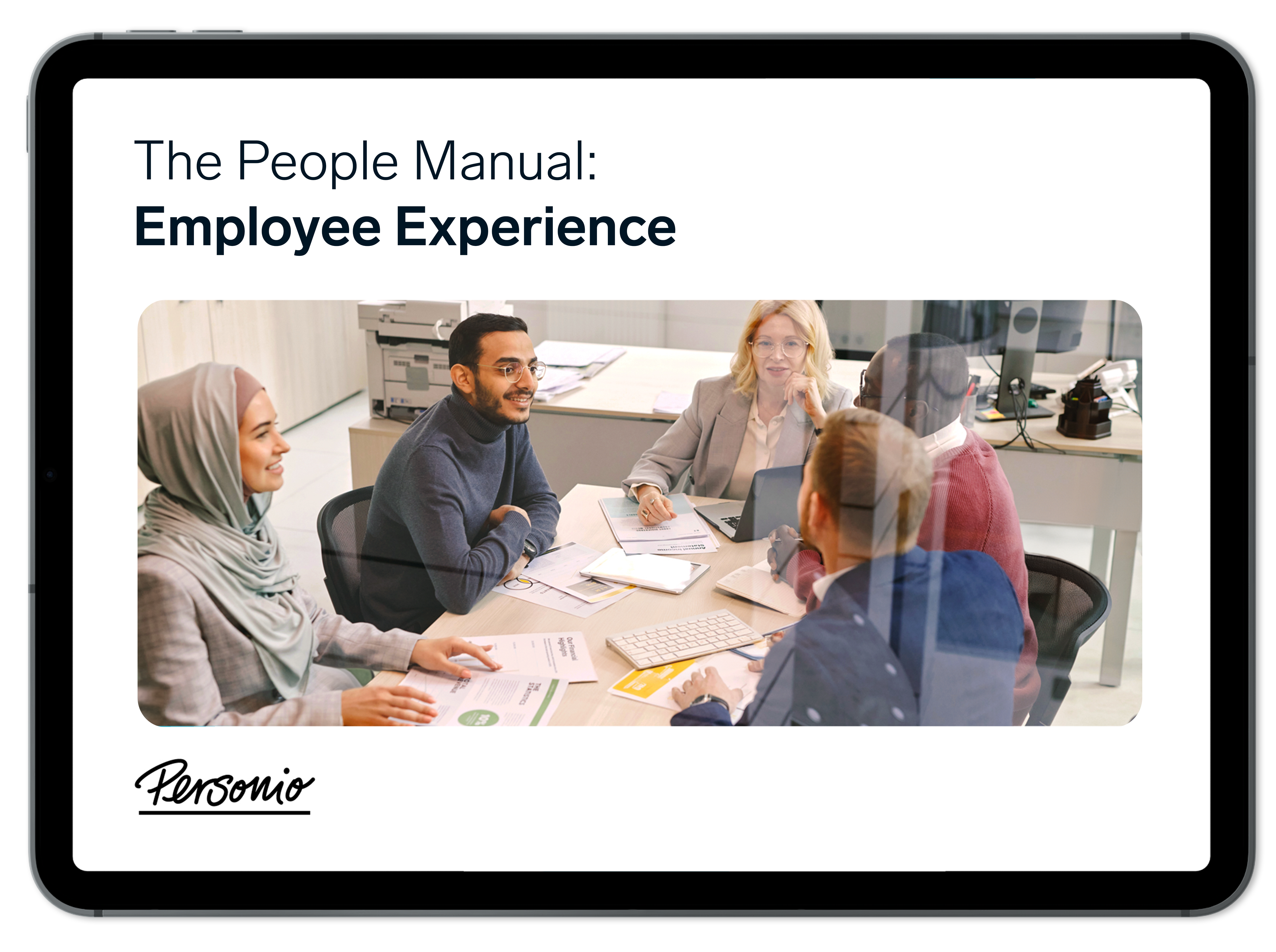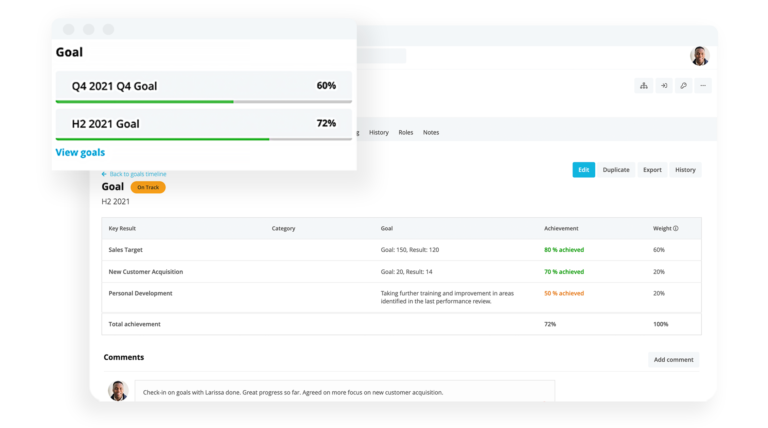What is Continuing Professional Development?

Professional development can unlock the strength of your workforce in a variety of ways. But, it requires a bit of a rethink when it comes to the concept, who it applies to, and how to put a professional development program into action. In this post, we're breaking down the concept into bite-sized chunks — we hope you enjoy it!
Ready to focus on every element of employee experience? Download our guide.Contents
- 1What is Professional Development?
- 2What is Continuing Professional Development?
- 3What is a Professional Development Plan?
- 4What are the Benefits of Development?
- 5What are the Drawbacks of Development?
- 6HR Leaders: Introduce Professional Development in Five Phases
- 7Unlock Development Through Performance Management
What is Professional Development?
Professional development refers to any type of training, education or learning that an employee experiences during the ‘development’ phase of their employee lifecycle. After an employee enters the workforce, this kind of development can help them keep up to date with current trends, learn new skills or advance their careers.
Some of the most common professional development examples include:
A lawyer taking a course on trending legal topics or updates to various laws as times change.
A teacher is required to learn how to use certain new software to help teach students.
A marketing professional attending a conference about the latest digital trends.
As you can see, professional development can take a lot of different shapes and forms. But, as we look to understand it, let’s think of it as an event (a course, a day, etc.) that a professional participates in to get better at what they do (in a professional, hard-skill-oriented capacity).
Why is Professional Development Important?
In many cases, professional development may be legally required. For certain professions, like a lawyer, doctor or accountant, development is baked into the very heart of the role. That means there is a requirement, often from a chartered body, that requires a set amount of hours spent on topics relevant to the job.
But, let’s think a bit beyond that. We should know that this kind of development is important because it’s required, but also because it can help employees. It can help people get better at what they do — and, for that reason, we may need to reimagine what we call professional development entirely…
What is Continuing Professional Development?
Continuing professional development (CPD) is the more holistic variation of professional development. It is based on the idea that development can happen outside of a formalised course or training session. It is couched in the idea of mentoring and training opportunities that happen "outside of the classroom".
Some popular continuing professional development examples include:
Job shadowing a colleague or supervisor
Reverse mentoring to learn from a more junior colleague
Coaching opportunities
Stretch opportunities (taking on new and unfamiliar work responsibilities)
As an HR professional, you’re most often likely to see CPD as a function of your organisation’s learning and development (L&D) program. The two often go hand in hand, as they are a continuous process dedicated to helping employees improve.
Why is Continuing Professional Development Important?
Continuing professional development is important because it’s a way to think about development that extends beyond traditional course work and once-a-year training sessions. It looks at development as a constant, continuous process, in pursuit of workforces continually getting better at what they do.
Half a decade of insights on employee experience

Our "People Manual" covers all things related to employee experience and developing initiatives that result in more engaged employees. Grab your free copy right now.
Download It TodayHow Does Development Relate to Professional Growth?
Professional development, in a way, is a means to an end. The idea of professional growth is that employees are often working toward some kind of goal in their careers. This could be a promotion, a change in what they do or simply a change in their working environment. Professional development can help unlock and achieve that professional growth.
In that way, it’s best to think of professional growth as inseparable from career progression.
What is a Professional Development Plan?
A professional development plan is an outline of the steps an employee can take to hit their professional development goals.Have you ever encouraged an employee to learn a new skill, reflect on their behaviour, change their approach, take a course or learn from a colleague? If so, you have, perhaps even unknowingly, crafted a professional development plan!
Keep in mind the concept of continuing professional development.While it might not be blindingly obvious, any of the following activities are actually a form of the development of professional skills.
It may go by different names, though, including:
Training
Personal development
On-the-job learning
Lunch-and-learn sessions
Workplace education
No matter what we use to name it, helping employees get better at their jobs is a core element of talent management. It helps attract, develop and retain qualified employees.
What are the Benefits of Development?
Overall, the key benefit of professional development is that it can boost your organisation’s employee retention strategy. Employees who feel developed in their roles, and feel an organisation’s commitment to that development, are far more likely to stick around and do great work for longer.
But, there is also evidence from research to support the value of training. For example, in a McKinsey survey, only 5% of respondents said their company’s talent management was very effective at improving company performance.However, here’s the key: 99% of those who made the previous statement say that they outperform their competitors!
Additional research conducted on SurveyMonkey revealed the following:
Roughly 86% of employees say that job training is important to them—and nearly three out of every four (74%) are willing to learn things outside of work hours to improve their job performance.
The results of this survey with 666 employees go even further. It reveals that:
59% of those surveyed say it improves their overall job performance
51% believe it gives them more self-confidence
41% claim it helps their time-management skills
33% cite it as a factor in earning a pay increase
So, the benefit of professional development is not simply that it keeps employees around for longer. But, that it can have a meaningful effect on your bottom line, too. It’s a classic win-win situation!
What are the Drawbacks of Development?
Is there a dark side to professional development? As you’ll see in the table below, here are some pros and cons that must be handled with care…
Professional Development Pros | Professional Development Cons |
|---|---|
Increased employee confidence | Resentment and potential feelings of jealousy if some employees are developed and others are not |
Improved job retention | Opportunities. Feeling 'left out' if development occurs outside of working hours |
Better job satisfaction | Appropriateness, as employees may leave if they feel they are being trained for a job that doesn't exist |
Better employee efficiency | Innovation. Employees may have new ideas that are unable to be implemented (leading to churn) |
Lower risk of accidents | Change. Challenging the status quo may be difficult for some employees to accept |
Improved consistency of work | Cost. It can be expensive to train employees anew |
Better job performance | Covering up. Employees may feel training isn't enough to address real, structural company issues |
Higher overall employee standards | Time. Training takes time away from the bottom line |
HR Leaders: Introduce Professional Development in Five Phases
Every HR leader should have professional development available as a motivational tool for their workforce. Not only to help retain them but to develop them and even attract them in some instances (a great training program, after all, can be a magnet for young talent who want to get better at your organisation).
But, what you need is a professional development process. You need an infrastructure that helps not only make professional development real for your employees but actionable and easy to adopt. Here’s how we would recommend introducing it in five key phases:
Phase | Defined |
|---|---|
Core Competencies | Focus on what your organisation values the most. Are there skills you think are non-negotiable for your workforce? Whether derived from your product/service or your values, identify these first. |
Formal Training | Introduce professional development to your org through the benefits of developing core skills (like giving feedback). Host a mandatory training session for everyone to participate in. |
Growth Talks | Make professional development a key part of your performance management process. Have supervisors and leads find out what professional growth looks like to your average employee. |
Activations | Whether introducing a range of (optional) courses and classes or a proper development budget, you need to activate your workforce's ability to develop professionally. |
Tracking | Keep employees and managers honest by tracking whether professional development goals are being accomplished, and where you can help support as an HR function. |
The Key to Strategic Performance Management

Use our guide to set up your next great performance process. Find out how to strategically manage, motivate and retain employees in our practical guide.
Download NowUnlock Development Through Performance Management
Performance management can help unlock development in real and concrete ways. But, you have to make sure that you’re doing performance management the right way.
Automating your performance growth cycles, having a central place to store feedback, and even embracing things like 360º feedback can all be important. The good thing is: Personio can help.
Learn more about our Performance feature today, and then book a web demo with one of our experts to see it in action. Professional development can help your org win the war for talent — gain a competitive advantage with our help today.

Tobias Stetter
Tobias Stetter has been working intensively for years on the human resources development of the future and how startups and established companies can cooperate. With the digital coach from everskill, learning content can be sustainably anchored in everyday life.
